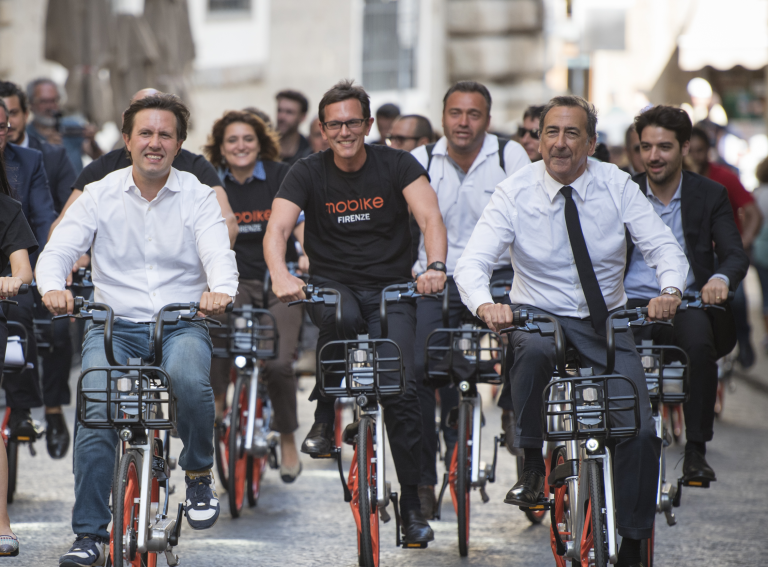There’s a problem brewing on the streets, and it’s all about speed. In the cycle lanes, the old order is being overturned by a new wave of e-bikes and e-scooters. Many are flouting the law by zooming through the 15.5mph speed limit, and chipping away at the tolerance of conventional cyclists who share their space.
It could be a Deliveroo, Uber Eats or Getir delivery rider casually accelerating away from the lights at 20 mph, without even moving the pedals, or an e-scooter weaving through the potholes at pace. Tensions are stirring as electrification begins to hit its stride.
It is likely to get worse before it gets better. In the early days of e-bikes, designs were clunky and the motors had a limited range but now they are sleeker, and are capable of travelling further and faster on a single charge. Meanwhile, an estimated 1m privately-owned e-scooters are being ridden illegally on public roads.
But there is little point in railing against the march of technology, and the evident appetite for affordable alternatives to the car. [Pure Electric, the e-bike and e-scooter retailer, has commissioned research which found that 13m people earning under £25,000 a year would use an e-scooter if it were legalised]. There is an evolutionary process at work among vehicles with electric assistance – and it may well lead to the creation of entirely new modes of transport.
The government has recognised as much. Trudy Harrison, a junior transport minister with responsibility for “active travel”, last month endorsed an action plan, devised by the Motorcycle Industry Association and Zemo Partnership, decarbonisation specialists, which laid out the need for a new category of “Zero emission powered light electric vehicles”, or PLV for short.
It is an eminently forgettable label – but then, it can be difficult to conceptualise something which doesn’t yet exist. Younger readers may struggle to believe that anybody ever thought we would call the internet the Information SuperHighway, but that’s what it was called in the 1990s. Or what about the “horseless carriage”? The pioneers took a while to invent the word “car” and even longer to free themselves from a design which continued to look like a carriage, but without a horse pulling it.
The “active travel” lobby – that phrase again – are finding it even harder to adjust. It has become an article of faith for them that e-bikes are indistinguishable from conventional pedal cycles, and they have gone to touching lengths to demonstrate their goodwill.
Scientific papers trot out their “evidence” that riding an e-bike can involve as much exercise as pedalling an old-style bike, in part because riders are likely to use them more. In that case it would be rude to mention the rider I saw this afternoon whizzing up a hill without once moving her pedals.
There are of course perfectly pragmatic reasons for inviting e-bikes, and e-cargo bikes and e-scooters into the fold. For a start, there is strength in numbers, and it helps attract public funding and political support for cycle lanes and other infrastructure. There are also defensive arguments: if helmets, insurance and number plates become compulsory for e-bikes, there is a risk that the laissez faire system for cyclists may also come under attack. Less thought is given to the risk that by sticking together, they will “hang together”.
The attempt to stifle these debates is leading the defenders of the status quo into contortions. The power output of an electronically assisted pedal cycle must not exceed 250 watts – yet e-scooters are allowed twice that, or rather more than a Tour de France champion produces when racing up the Alpe d’Huez. It has become a journalistic staple to “expose” mechanics who are willing to remove speed limiters on e-scooters, with some offering to enable speeds of more than 50mph.
Until now, efforts to raise the speed limit for e-bikes have all flopped, often attracting no more than a few thousand signatures on public petitions – and a backlash from “proper” cyclists, urging them to pedal harder instead.
But the Dutch e-bike maker Van Moof has announced plans for a vehicle capable of 50 km/h or 31mph and says that in future, “classifications such as ‘car’, ‘bicycle’ and ‘motorcycle’ should not determine the nature of the products we think up, develop and offer.” It wants the vehicle to be a “new default for city travel” and intends to discuss techniques such as geofencing to ensure compliance with local laws.
Might it have a point?











